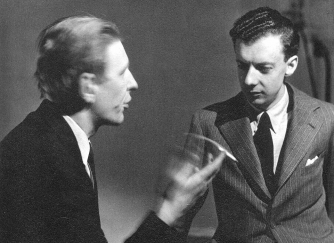Details
Queen Elizabeth Hall
Southbank Centre
Belvedere Rd
South Bank
London
SE1 8XX
England
Programme
Benjamin Britten – Simple Symphony, Op.4
Benjamin Britten – Sinfonietta, Op.1
Benjamin Britten – Cabaret Songs: Funeral Blues
Benjamin Britten – The Ascent of F6: Cabaret Jazz Song
Benjamin Britten – Night Mail
Performers
Alex Jennings – Actor
Barrie Rutter – Actor
Johnnie Fiori – Singer
Matthew Kofi Waldren – Conductor
Phillip Breen – Director
Alexandra Wood – Leader
City of London Sinfonia
Other concerts in this Series (+)
Programme Note
City of London Sinfonia and the London Review of Books present an evening of musical-literary collisions, inspired by a meeting (and parting) of minds like no other.
The association between Benjamin Britten and W.H. Auden began in the mid-1930s, when they worked together on short documentaries for the GPO Film Unit and plays for the Group Theatre, a largely forgotten experimental troupe whose collaborators also included Christopher Isherwood, Louis MacNeice and Henry Moore. Initially overawed by Auden’s precocious gifts, Britten eventually emerged from this apprenticeship with a genius so singular and single-minded that Auden never quite forgave him. Perhaps because of this, the debt owed by Britten’s early masterpieces to the lessons of their partnership has been underappreciated, over the years.
This programme traces the full arc of their creative relationship, from the incidental music and cabaret songs Britten composed for Auden’s 1936 play, The Ascent of F6, through to the imagined meeting between an elderly ‘Bengy’ and ‘Wystan’ in The Habit of Art by Alan Bennett – via Britten’s Simple Symphony and Auden’s excoriating and prophetic break-up letter.
Drawing also on writing by Bennett and Frank Kermode from the LRB archive, the evening culminates in a rare performance of Britten and Auden’s most famous collaborative work, Night Mail. Marking 50 years since Auden’s death and 110 years since Britten’s birth, this first instalment of a new partnership between CLS and the LRB revives and reinterrogates the tempestuous lifelong marriage between music and text.

 Your events at Classical Events
Your events at Classical Events

